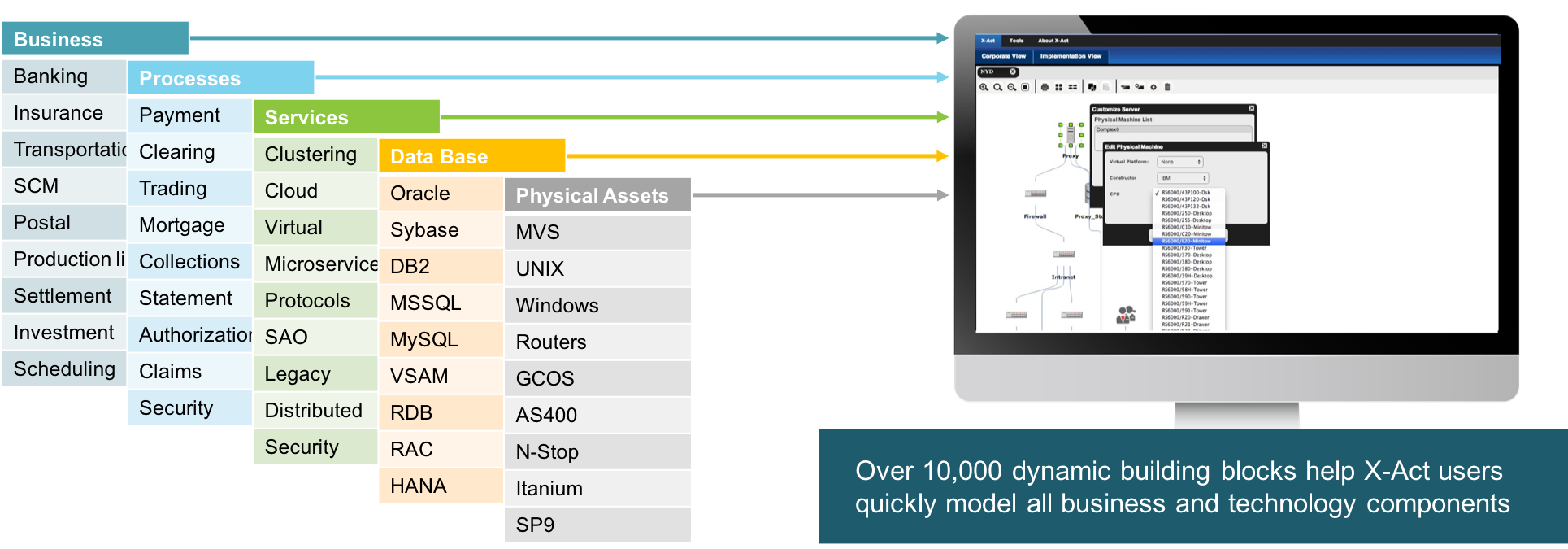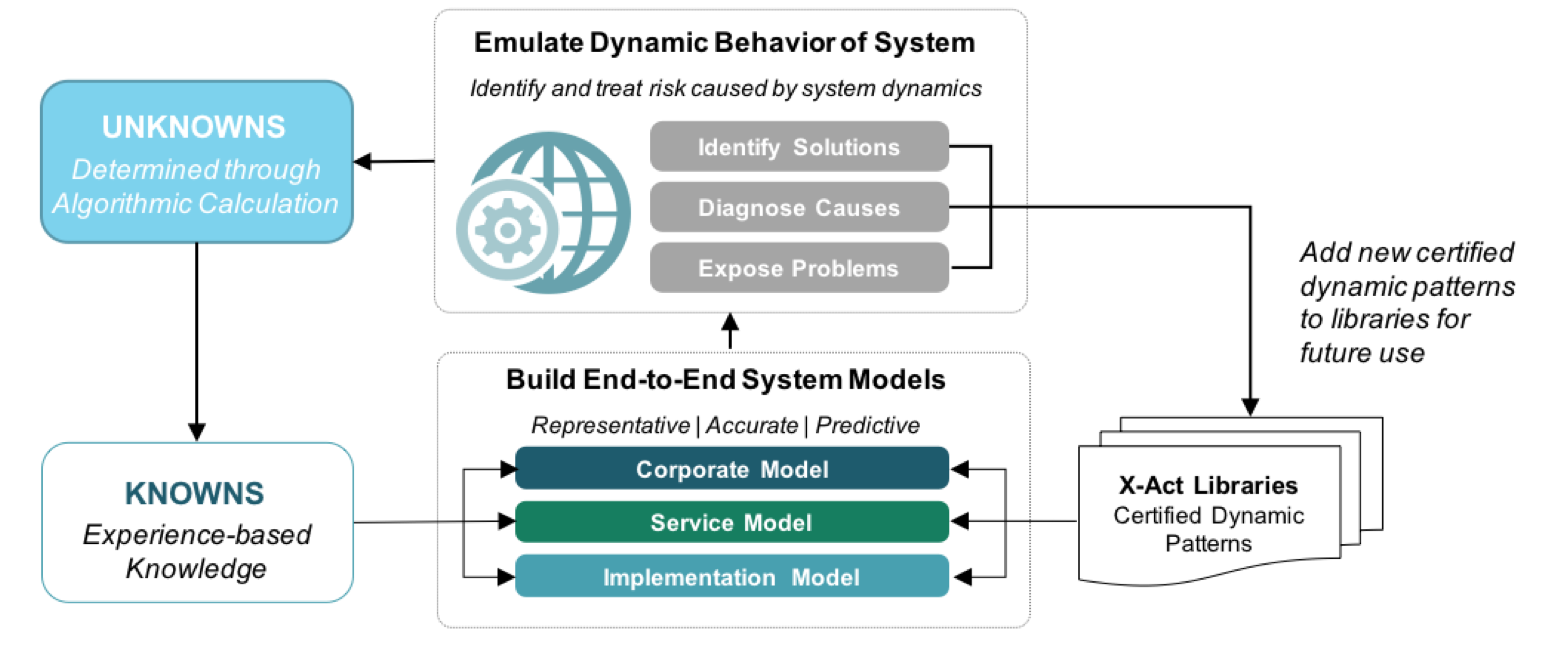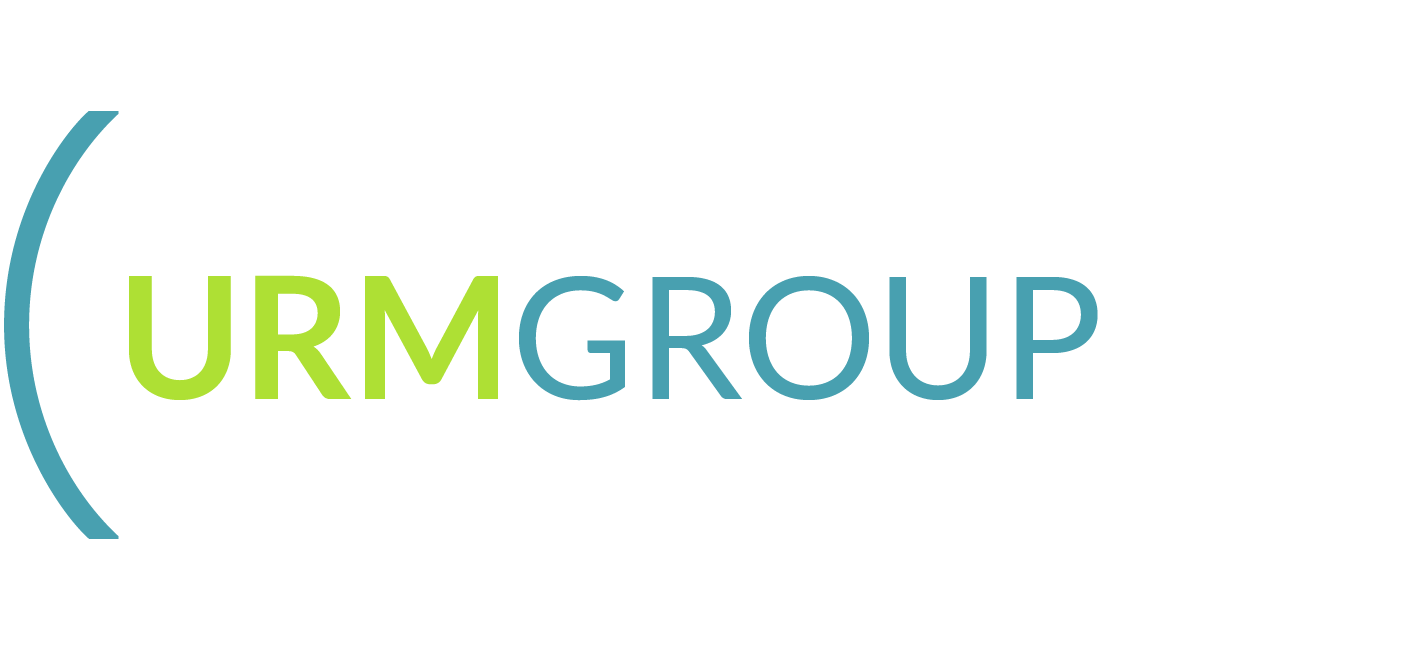Using X-ACT Libraries for Intelligent Design and Prescriptive Management of Risk
/in X-ACT /by Nabil Abu el AtaWhen business and IT stakeholders want to build best in class systems or ensure the optimal performance of exiting business ecosystems, mathematical emulation is an effective way to validate plans, predictively expose risks, and identify which corrective actions will achieve the desired results for any given situation.
But to gain dependable intelligence, emulations must mathematically encapsulate all the characteristics, dynamic behaviors and dependencies among each component of the ecosystem being analyzed. When the emulation adheres to all the applicable rules that govern system behaviors—whether these patterns of behaviors are known from the outset—it becomes possible to reliably predict the future behaviors of the system under any set of conditions and dynamics that may evolve. This includes conditions that have never occurred before or are believed to be highly improbable.
With this information, stakeholders can make decisions with confidence because they are able to realistically quantify the financial and operational impact of any decision and prepare for future changes that may occur for any reason—including changes outside their control, like a sharp increase in unemployment, a trade war or the introduction of a complete revolutionary technology.
X-ACT® Libraries Speed Delivery and Control Processes
A global business is an amalgamation of millions of dynamic parts and interdependencies. Manually building a mathematical model that sufficiently represents the dynamics of each component would be a monumental task. To make mathematical emulation practical for business use, X-ACT automates the steps necessary to accurately represent system dynamics and provide reliable predictive intelligence.
X-ACT libraries are a critical asset that shortens the time to value of an X-ACT deployment from months to weeks and allow businesses to benchmark their systems against best in class implementations, gain a forward-looking view of the health of interconnected systems and know when a system transformation or disruption is needed.
Every business system, whether it be a global supply chain, payment settlement system or manufacturing production line, has some characteristics that make the system unique, but in large part the system is built using common building blocks. X-ACT libraries contain many of these common building blocks with over 10,000 certified dynamic patterns that can be used in the same way pre-built models are used in Computer Aided Design (CAD) and Computer Aided Manufacturing (CAM) to speed the delivery of designs and control processes.
In X-ACT, a business system emulation starts at the organizational level, which is then served through the generation of processes and sub-processes, implemented though a certain logic or layout (architecture, urbanism or design), on a physical layer (factory, data center, sorting/transport configuration or economic instrumentation).
X-ACT Libraries Support End-to-End Modeling of Business and Technology Infrastructure
To build a representative model, users of X-ACT simply select dynamic patterns from the libraries that span everything from common business operating structures and technologies to specific platforms and databases.

These dynamic patterns are created from mathematical emulation of business and technology ecosystems through algorithmic models that encapsulate behaviors, dependencies, and surrounding rules for ecosystem behaviors so they can perform predictive analysis. Each model stores remedial options to support prescriptive actions for risk avoidance. They become, in effect, dynamic Legos modeling entire business ecosystems with technology and business infrastructure interdependencies.
When the modeling is complete, these “dynamic Legos” make up the X-ACT emulator. The deployed process allows users to control and manage the targeted environment, predict the eventual crisis or singularity points, and augment X-ACT libraries with their own newly discovered patterns to gradually build and support more intelligent automation.

Conclusion
Using libraries populated by the mathematical predictive platform represents a real breakthrough that alleviates many of the pains created by the traditional management, which starts with problem-analysis-diagnosis and ends with an eventual cure well beyond the point of optimal action.
As the libraries are continuously enriched by the dynamic characteristics that continuously evolve during a system’s lifetime, the knowledge contained within the libraries becomes more advanced. By continuously recording within the libraries foundational or circumstantial system changes, the predictive platform will identify any new risk, determine the diagnosis and define the remedial actions, and finally enhance the libraries with this new knowledge. Any decisions can be justified with accurate knowledge of the benefits, costs and constraints of any proposed change.
In this way, algorithms help businesses create a defendable advantage—by revealing the factors that may impact performance or limit agility and automatically retuning systems to maintain the highest level of performance and flexibility to respond to changing business dynamics.
Learn more about the benefits of X-Act libraries
The Using X-ACT Libraries for Intelligent Design and Prescriptive Management of Risk paper explains how businesses use X-ACT libraries in the same way pre-built models are used in Computer Aided Design (CAD) and Computer Aided Manufacturing (CAM) to speed the delivery of designs and control processes.
Cloud-Based Services Transforming Business
/in X-ACT /by Mike BrookbanksTo board members and business divisions, cloud-based services present an ideal solution for the delivery of adaptable technology services, which include services, applications, software licenses and infrastructure. Analogous to how electricity is delivered today, cloud-based services allow businesses to provide technology services as a utility, where supply mirrors business demands and changing volumes.
There are many business benefits that make cloud-based services attractive to executive leaders. First, the business’ capital expenditure decrease because the delivery of cloud-based services are charged as an operating cost. Additionally, development becomes agile and production lead times are reduced as business is componentized into a core set of services, which can be delivered as demand requires. This improves the time to market for new products and allows faster reactivity to changing business dynamics. Finally, engineering the company and business processes around a standardized set of cloud-based business solutions provides better predictability as each service can be utilized as needed to meet varying business demands.
To a new business, using cloud-based services is often clearly the ideal choice. For established businesses, the choice can be more difficult, as transforming legacy operations and technology into a cloud-based services model presents a host of challenges. Transformation, which requires moving operations and technology, which is a sunk capital cost, to cloud-based, componentized services can be a complex, time consuming and expensive endeavor.
Taking a CAE Approach to Cloud Migration
To mitigate transformation risks, companies use the predictive capabilities of X-ACT® to first prove the business case, then determine the best migration strategy and finally manage the execution of the change program. In today’s interconnected world, providing the promised service level to customers is key. Project failures have a direct impact on brand reputation and pose a continued operational risk to new and established businesses alike.
In order to fully exploit cloud-based services, businesses must take a top-down, business led approach that considers the entire operational model as well as the underlying technology services. X-ACT supports a Computer-Aided Engineering (CAE) approach to cloud migration that allows users to predict how business and technology service components can be optimally used by the business for development and operations/production.
To quickly build representative models, X-ACT libraries provide pre-built and fully configurable elements that cover a wide range of business and technology service components. Examples of X-ACT library’s 10,000 certified components include pre-built models of a payment service, customer database, reservation booking, settlement service and call handling service.
X-ACT’s built-in and configurable libraries of service components and predictive capabilities are used to develop and transform the business operating environment. Through this process, business volumes and costs, based on the utilization of underlying technologies, are optimized and adjusted in line with demand. In all cases, X-ACT ensures the customer’s service levels and experience is maintained and improved in alignment with the requirements of the business.
How Businesses Use X-ACT to Support Cloud Transformation Goals
Companies commonly use X-ACT in the following capacities to support their cloud transformation program goals:
- Determine how a proposed or current business and the associated technology services can be re-architected, componentized to exploit cloud-based technology
- How current business operations and technology be re-engineered to utilize cloud-based services
- Defines the optimal target operating model for the business
- Prove migration and test scenarios to minimize risk, address limits before migration commence, and minimize service disruptions
- Assure delivery of the migration at minimal risk and optimal cost
- Manage operational risk and cost through the migration
- Ensure the target operating models meet the service level demands of Enterprise or SME customers
- Increase customer’s confidence in delivery
- Define the optimal configuration of the current or new development environment within the cloud
- Predict how new developments can perform as volumes increase
- Optimally manage workloads across public, private and hybrid cloud providers
- Benchmark cloud service providers using the library of components and determine the optimal configuration, based on the business’ critical success factors (for example the service and response time)
- Determine the optimal business case and operating cost model
Conclusion
X-ACT supports the level of due diligence and groundwork necessary to ensure a smooth transition to the cloud. By delivering clear and actionable intelligence, X-ACT helps answers the business’ questions so that stakeholders can identify and agree upon the best-fit solution before committing any time or resources to a cloud migration program. During the execution phase, X-ACT provides the foresights necessary to ensure an optimal outcome that weighs both short and long-term cost benefits in alignment with performance and scalability goals so that the business can minimize risks and consistently gain all the benefits the cloud has to offers.
Learn how businesses use X-ACT to successfully execute cloud transformation programs
The Implementing an Effective Cloud Migration Strategy white paper explains how businesses use X-ACT to build an integrated strategy with clear intelligence of the optimal service commitments for quality, quantity and continuity balanced against cost for each critical business and IT workload.
Contact
New York, New York 10022
[email protected]
Universal Risk Management Research Group Limited
10 Earlsfort Terrace
Dublin 2, D02 T380, Ireland
Phone: +353.192.01598
Latest Thinking
 Remembering Charlie T. Fote: A Pillar of URM GROUP and a Friend to AllNovember 20, 2023 - 3:35 pm
Remembering Charlie T. Fote: A Pillar of URM GROUP and a Friend to AllNovember 20, 2023 - 3:35 pm URM GROUP Announces Filing of Manufacturing Optimization Provisional Patent ApplicationNovember 7, 2023 - 5:15 pm
URM GROUP Announces Filing of Manufacturing Optimization Provisional Patent ApplicationNovember 7, 2023 - 5:15 pm URM GROUP CRO Nabil Abu el Ata Accepted into Forbes Business CouncilOctober 24, 2023 - 9:16 pm
URM GROUP CRO Nabil Abu el Ata Accepted into Forbes Business CouncilOctober 24, 2023 - 9:16 pm


